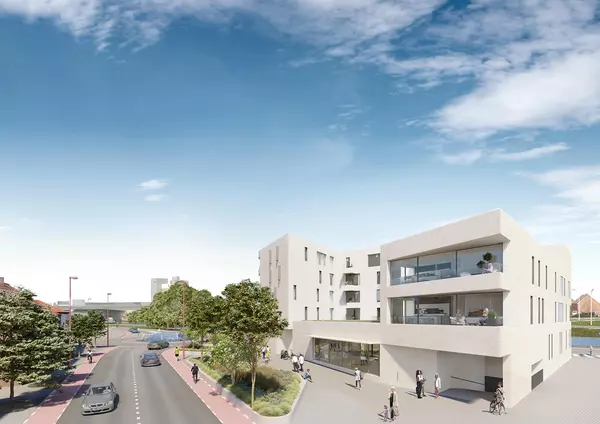HOA Fees Are Rising—and Getting Harder for Homebuyers To Avoid


Getty Images (2)
On top of the other challenges faced by homebuyers in today’s market, homeowners association fees are rising and becoming more prevalent.
In 2024, 41% of homes listed for sale on Realtor.com® had some kind of HOA fee, up from 39% the prior year, according to a new report from the Realtor.com economic research team.
The median HOA fee also rose 14% last year, to $125 per month, up from $110 in 2023, the report found.
For homebuyers facing persistently high mortgage rates, as well as rising property taxes and insurance costs, it often means an additional monthly cost of homeownership to consider, potentially reducing their purchasing power.
“With a down payment and closing costs up front, and then principal, interest, taxes, and insurance every month after that, purchasing a home is already a financially daunting task, before adding in the rising cost of HOA dues,” says Realtor.com Chief Economist Danielle Hale. “When considering a home with an HOA, buyers should work to understand what benefits it provides like maintenance, security, or communal amenities, and how the HOA fees factor into their overall budget.”
Certain HOAs provide clear benefits for their members that can raise their property values, such as a pool, tennis courts, or a community clubhouse. Sometimes, HOA fees even cover certain maintenance or utilities, lowering the monthly costs that would otherwise come directly out of pocket for homeowners.
In other neighborhoods, often where the HOA is overseen by the original developer instead of the residents, the purpose of the fees is less clear, and the governance and finances of the association can be opaque.
“Buyers should look closely at what benefits the HOA actually provides, like maintenance, security, or communal amenities, and decide whether those are really worthwhile,” the report notes. “If not, it may be wiser to save that monthly expense and target a home without HOA obligations, most likely an older single-family home in a less flashy neighborhood.”
HOA fees more common in new construction
The report found that newly built homes are much more likely to carry HOA dues, with 70% of new builds carrying the association fees compared with 38% of existing homes listed last year.
However, previously owned homes on the market last year typically had higher monthly fees than new builds.
The median monthly HOA fee among existing homes was $148 in 2024, up 15% from the previous year, while among new homes it was $71, up just 6%, the study found.
That may be because new homes have tended to be smaller than existing homes in recent years, as builders grappling with higher mortgage rates seek to offer more affordable options. As well, HOAs that have been around longer may offer more amenities and have higher upkeep costs, raising the required dues for residents.
As more recently built homes come back on the market for resale, the share of previously owned homes that carry HOA fees could continue to rise.
HOA fees are significantly higher for condos
Unsurprisingly, attached dwellings such as condos, row homes, and townhomes are also more likely to have HOA fees, with 84% of such listings including such a fee, compared with just 34% of single-family homes.
“Homes like condos, townhouses, and new-construction single-family homes in neighborhoods with ample amenities are more likely to have an HOA fee,” says Hale.
Those fees also tend to be significantly higher than for single-family homes. The median monthly HOA fee for condos was $375 last year, compared with just $58 for single-family homes. (The study groups condo fees in with HOA fees in the event that they are separate expenses.)
Still, both kinds of properties have seen rapid increases in HOA fees, which rose 9% on the year for condos, and 7% for single-family homes.
“Across the board, prospective homebuyers are more likely to be subject to HOA dues, and those dues are likely to be higher than they were a year ago,” the report states.
Vacation destinations are most likely to carry HOA fees
The top 10 metro areas where listings were most likely to carry HOA fees were dominated by beach towns and ski resort areas, likely because of the prevalence of condo properties in those areas.
The HOA capital of America is Edwards, CO, where 90% of listings had HOA fees last year, with the median dues coming in at $525 per month. Located in the Rockies, west of Denver, Edwards is a skiing destination, located near Beaver Creek Resort and the slopes of Vail.
Other ski towns in the top 10 include Heber, UT, where 83% of listings have HOA fees, and Jackson, WY, with 77%.
Second on the list is Myrtle Beach, SC, the beach and golfing destination where condos abound. In Myrtle Beach, 85% of listings had an HOA fee, with the median monthly fee costing $138.
Florida also featured prominently in the top 10, with three metros making the list: Orlando (78%), nearby Lakeland (80%), and North Port (76%).
The metros with the lowest share of listings with HOA fees tended to be smaller markets with fewer newly built homes and condos, typically well inland.
Tied for the smallest share of listings with HOA fees were Clovis, NM, Elmira, NY and Eureka, CA, all three of which had 0% of listings with HOA fees.

Editor’s note: This article has been updated to clarify which markets had the lowest share of listings with HOA fees, following a revision to the original report.
Categories
Recent Posts









"My job is to find and attract mastery-based agents to the office, protect the culture, and make sure everyone is happy! "
